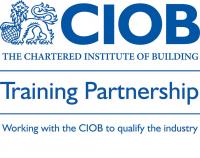This course has been designed to impart the required information for the identification and prevention of striking rail bridges.
On completion of this course, delegates will be able to understand and recognise the following:
- Introduction and background defining bridge strikes
- The Law
- Define individual responsibilities
- Vehicle height measurement
- Journey planning and routing
- Traffic signs and road markings
- On the road – understanding the consequences
- Reporting a bridge strike
- Consequences of a bridge strike
- Understanding historical incidents
Course Outline:
- In 2014 there were over 1700 bridge strikes in the UK, resulting in significant delays to train passengers and road users. This was an increase of almost 10% on the previous year, in many cases the Police will attend the scene of a bridge strike and control centres will notify emergency response personnel such as Bridge Strike Nominees, to attend and inspect the structure and take appropriate action. Whilst this is occurring, the railway tracks will be blocked to traffic and often the road blocked to road users.
- Driver knowledge of vehicle/trailer heights, signage are required by ‘The Road Vehicles (Construction & Use) Amendment) Regulations 1986’
- Most strikes are by LGV’s, (small lorries and large vans and low loaders carrying plant)
- This can result in significant and costly damage to bridges and structures and to the vehicles themselves in addition to serious safety risks to passengers and members of the public.
- Resulting legal prosecutions can be very costly financially and in terms of company reputation. This course is needed to give sufficient information to drivers, managers and planners to enable them to prevent striking bridges, or to respond to those bridge strikes appropriately.
- Increased education and engineering and route planning and driver awareness can eradicate this problem.
Mode of Delivery:
- Presentation
- Individual or Group Exercises
- Discussion
- Visual Aids e.g. short DVD/video, models, samples, etc
- Open workshop
- Final discussion
Benefits of Attending:
- Compliance with the law
- Avoidance of prosecution
- Human costs saving
- Repair cost saving
- Protection of reputation
Intended For:
- Those involved in the transportation of goods by road
- Those using roads likely to suffer bridge strikes/bridge strike nominees
- Vehicle drivers/supervisors/managers/route planners
Pre-Course Requirements:
An understanding of what vehicles and loads candidates put out onto the UK road network.









